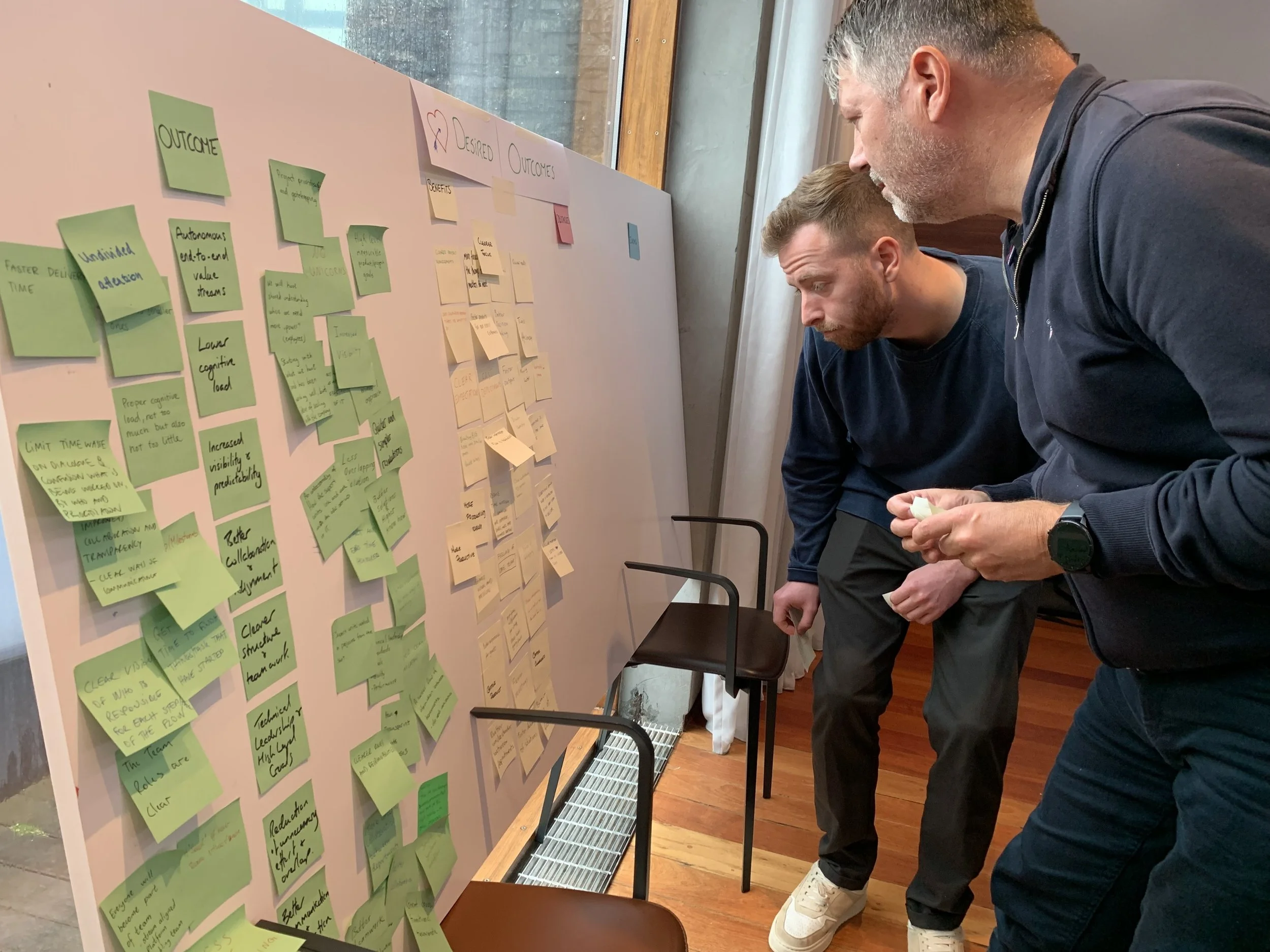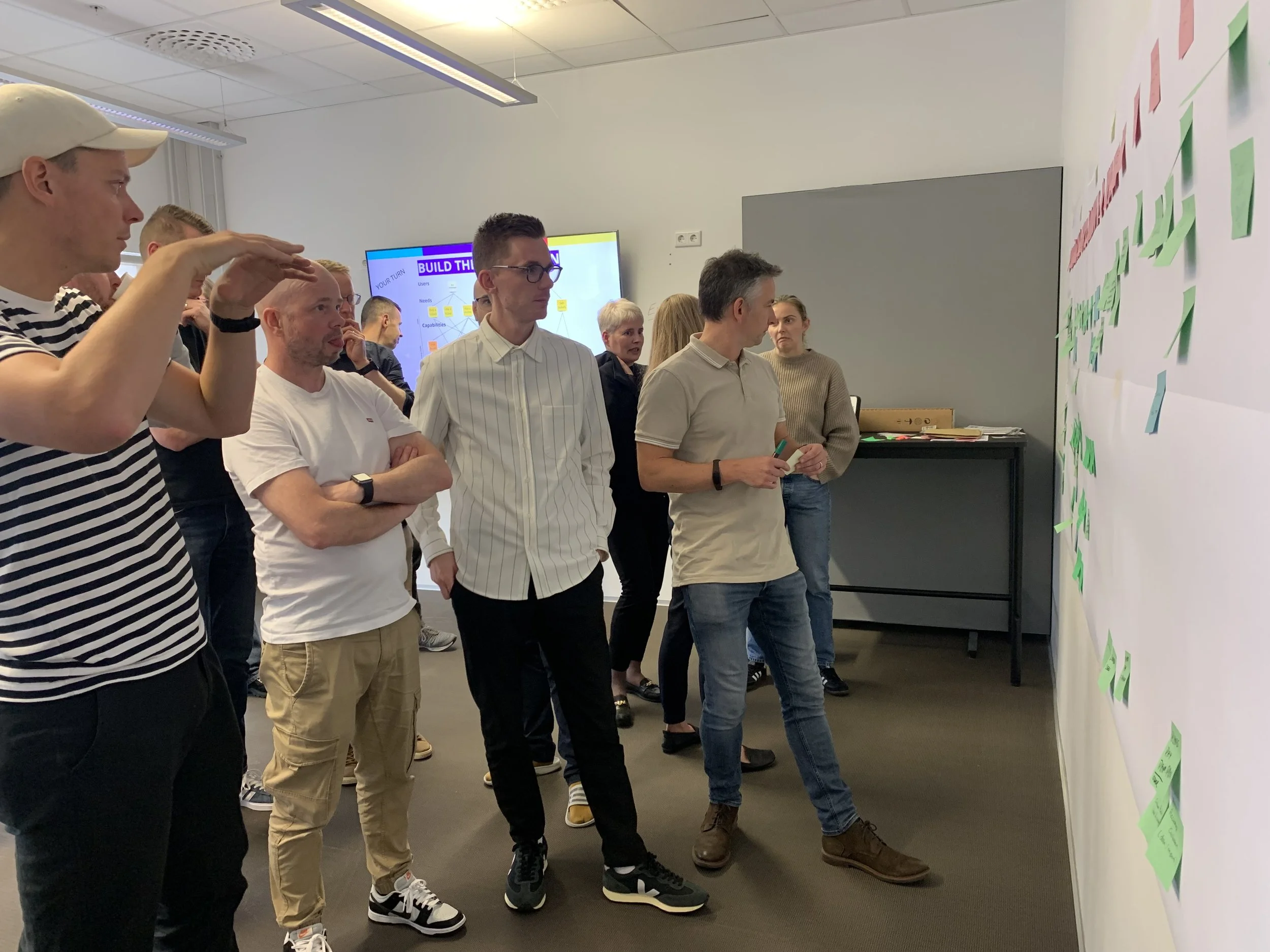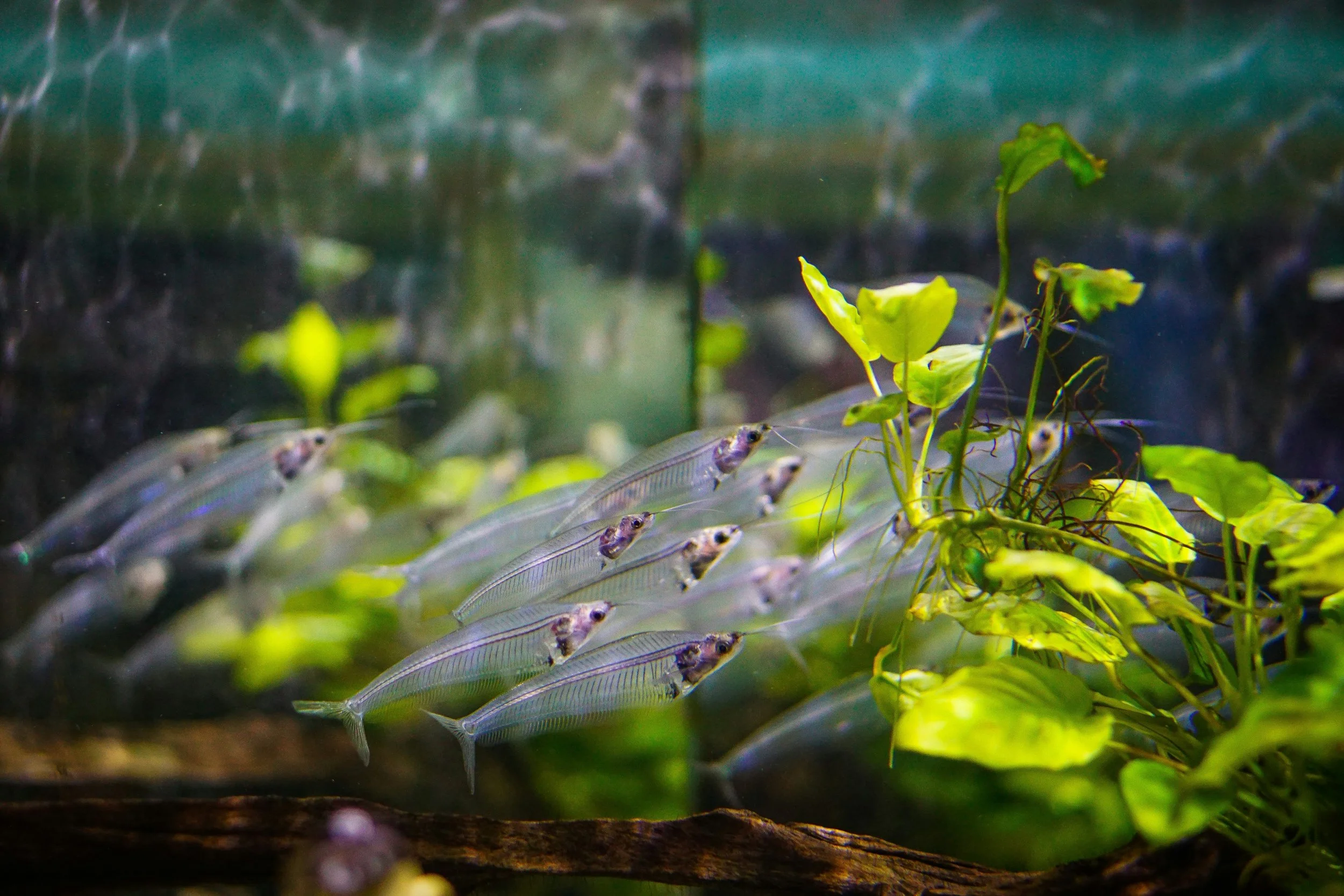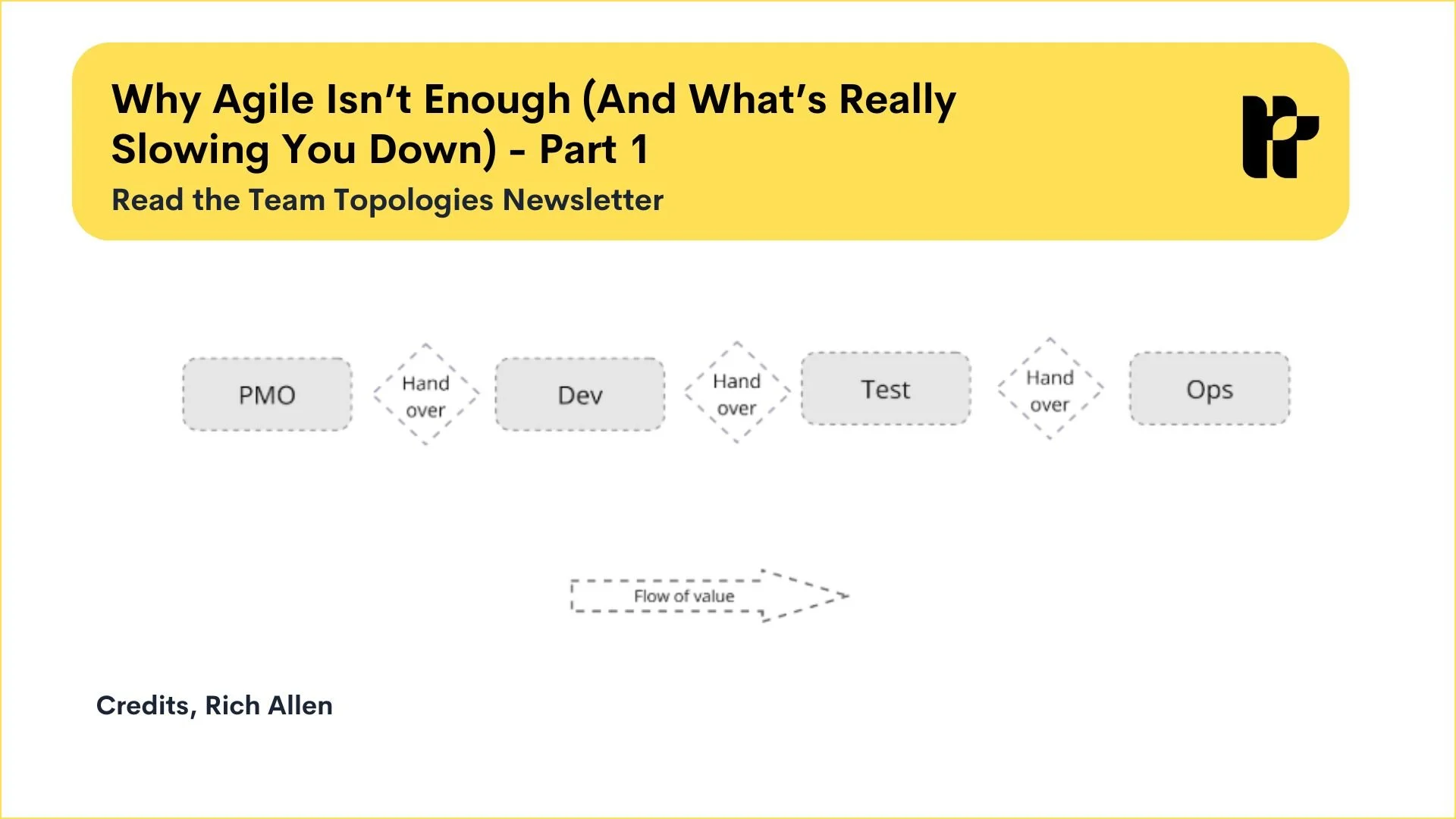Transforming Blue Lagoon: A Journey Towards Sustainable Growth and Empowerment
Authors: Ingibjorg Rafnar Petursdottir and Jónatan Arnar Örlygsson Directors for Digital Solutions & Data at Blue Lagoon, with the participation of Rich Allen Independent Consultant and Team Topologies Valued Practitioner, Erica Engelen Independent Consultant and Team Topologies Valued Practitioner,
This case study is particularly relevant for change makers in organizations who aspire to co-create more adaptive, human-centered organizations. Blue Lagoon’s transformation demonstrates how trust, collaboration, and systemic thinking can unlock agility and sustainable growth, without compromising culture.
Key Takeaways
Trust as the foundation: Building openness and psychological safety early in the process enabled honest dialogue across departments and laid the groundwork for lasting collaboration.
User-centered perspective: By mapping the needs of both external and internal users, teams uncovered hidden misalignments and gained clarity on where value truly flows through the organization.
Clarity through Team Topologies: Redefining team boundaries around value streams and services reduced cognitive load, empowered people and teams, and preserved Blue Lagoon’s culture of care.
Product Teams with real Stewardship: Autonomous, dedicated product teams accelerated delivery, working pro-actively across value streams and with various stakeholders to ensure the highest value.
Sustainable Adaptability: Driven by a clear purpose and by learning the principles and practices for optimizing the Flow of value, teams co-created a new environment, built for adaptability. Because they did it in collaboration, they own it.
Setting the Scene
In the surreal landscape of Iceland, Blue Lagoon emerged from humble origins, a geothermal spa built upon mineral-rich waters known for their healing properties. From this unique discovery, a world-renowned luxury wellness destination organically grew, encompassing hotels, restaurants, skincare products, and spa experiences, each designed to elevate guest wellness and indulgence.
Yet behind its tranquil facade, Blue Lagoon faced the common challenges of rapid, organic growth, which increased the complexity of our organization structure, cross-team collaboration and technology systems. By late 2024, we experienced that launching new projects, such as our ambitious Highlands resort, became more difficult and slower due to this increased complexity. Clearly, we needed to find new ways of working and new organizational dynamics able to support our growth aspirations.
The Call for Support
Recognizing the challenge ahead, the Digital & Data leadership team reached out to Team Topologies with the aim to improve cross-functional collaboration. We sought a thoughtful approach to scaling that would protect our cherished organizational culture, one centered around trust, care, and employee wellbeing. In order for us to grow, while maintaining our high standards for customer experience, we identified the need for building autonomous, cross-functional teams which are empowered to drive change and growth continuously. To ensure alignment on the vision and to set the right priorities, a shared dialogue across all departments was key. Team Topologies resonated deeply with our core values, promising not just structural efficiency, but a fundamentally humane way to reorganize and thrive.
This marked the beginning of a three-month engagement that began with an intensive three-day onsite workshop in Iceland, followed by weekly remote enablement sessions designed to foster lasting transformation.
Day 1: Building Trust and Mapping Reality
The onsite workshop kicked off with a deliberate effort to foster trust and openness. Around forty people, double the expected turnout - primarily the Digital & Data department but also representatives from sales, marketing and finance - joined the first sessions, each bringing their unique perspectives and challenges. Our partners helped us set the stage by defining desired outcomes, giving people the opportunity to vent about current obstacles but also align on shared aspirations.
WORKSHOP - Outcome Mapping
Together, we participated an "In-flow Checks and Hand-offs" exercise focused on a recent hotel project that faced significant delays. As attendees visualized the project's flow, the room buzzed with revelations about previously unseen dependencies and bottlenecks. The exercise broke down barriers and sparked honest discussions, laying the foundation for genuine collaboration.
WORKSHOP - Value Stream Mapping
To further build trust and community, we shared an immersive Blue Lagoon experience, experiencing firsthand the warmth and care our brand offered to guests, a powerful reinforcement of why this engagement was essential.
Day 2: Visualizing Challenges, Crafting Futures
The morning of the second day was started with Team Interaction Modeling. We used the undefined team types, allowing the teams to objectively map our current reality without bias, clearly highlighting where processes overlapped, stalled, or completely broke down. Conversations became more candid and constructive, uncovering gaps in knowledge and revealing systemic issues.
But visualizing the blockers to the flow of value was only part of the story. While the first half of the day offered an unfiltered snapshot of how things were, it did so through the lens of current roles and responsibilities. To unlock more transformative thinking, we needed to take a step back - to look not just at the work we did, but at why we did it. That’s where User Needs Mapping came in.
User Needs Mapping offered a powerful shift in perspective. Its magic lies in its simplicity: starting with the question, "Who are our users?" Immediately, small cross-functional groups began exploring who really interacts with Blue Lagoon’s services. The conversations blossomed. Some answers were obvious - Hotel Guests, Blue Lagoon Spa Visitors. But others surprised even the participants: internal users like Reception Staff, Cleaning Teams, or the Activity Hosts who orchestrate memorable guest experiences. As we gathered these personas onto a large board, a human network emerged - one that extended far beyond the traditional customer.
WORKSHOP - User Needs Mapping
The second phase of the exercise focused on uncovering needs. What outcomes were these users trying to achieve? In small teams, participants mapped the journeys and intentions of their selected users. This sparked subtle but significant insights: a Hotel Guest “makes a reservation” while a Spa Guest “makes a booking” - similar actions, but with different expectations and processes. These nuances highlighted how language, assumptions, and systems often misalign in invisible ways.
This naturally led to discussions about the business capabilities required to meet those needs. At the center of this was Blue Lagoon’s award-winning booking engine, a cornerstone of their spa experience. Originally designed for a single purpose, this system was now being stretched to serve different hotels and contexts. Friction was mounting. The very thing that had once been a competitive advantage was becoming a constraint. This insight, uncovered through collaborative exploration rather than top-down analysis, helped ground abstract discussions in tangible challenges.
To complete the picture, we overlaid the existing team structures against the capabilities needed to serve the identified user needs. What emerged was a sobering view of cognitive load. Individuals in siloed roles were being asked to understand - and often switch between - multiple domains and systems. The impact of fragmented responsibilities was suddenly very clear.
This exercise didn't just surface useful data. It gave participants permission to think beyond their job titles, to set aside internal politics, and to focus on shared purpose. That shift was essential. With clearer alignment on what the organization should be enabling, participants could begin designing for the whole system - not just their corner of it. This mindset laid the groundwork for the rest of the day.
WORKSHOP - Team Interaction Modelling
In the afternoon, the focus turned to imagining what could be. Building on the shared understanding from the morning, our partners introduced the Team Topologies team types and guided the group through the idea of "feasible futures." Leveraging the concept of Fracture Planes, participants explored how teams might be restructured around autonomous value streams or independent services. What had begun as frustration evolved into a sense of momentum. The room felt lighter. The problems hadn’t disappeared - but suddenly, they felt solvable.
Day 3: Validating a New Direction
Day three focused on refining and validating these proposed team structures using Independent Service Heuristics - a structured framework provided by our partners to rigorously assess potential new team boundaries. Discussions were dynamic, balancing creative enthusiasm with practical considerations of feasibility and readiness.
WORKSHOP - Independent Service Heuristics
The day culminated in a compelling playback session, where participants confidently shared their insights and recommendations with the broader organization. This session underscored our collective commitment to the transformation process, enhancing buy-in and fostering a sense of organizational ownership.
Sustaining Momentum: Remote Enablement
Over the subsequent twelve weeks, we participated remote sessions led by our partners, diving deeper into Team Topologies principles, continuously refining team structures, and addressing emerging challenges. Attendance and engagement remained high - even remotely - a testament to the enthusiasm and commitment sparked by the initial onsite experience.
Unexpectedly, cross-functional collaboration notably improved. Sales and marketing teams not only attended consistently but actively embraced the principles, bridging the historical divide between business and technology.
Overview Value Streams and Platforms
Example Value Stream
Tangible Transformation
By the end of the engagement, significant outcomes had been realized:
Rapid Onboarding: Employee onboarding, previously a months-long process, shrank dramatically to mere days, quickly moving new hires towards productive contribution. Where it once was a ‘task’ for individuals, the onboarding is now done by the entire team, making it a very welcoming and unique experience for newcomers.
Clarity and Empowerment: Clear team boundaries, roles and responsibilities increased autonomy and decreased dependency on key individuals, significantly reducing bottlenecks.
Stewardship & pro-active, systemic thinking: Our teams feel responsible over the value they are delivering in their value stream but also for the entire company. They feel empowered to look at the broader environment and actively collaborate with other value streams and stakeholders to increase the value they can deliver to our customers.
Accelerated Project Delivery: Building Product Teams unlocked our ability to quickly scale and service new destinations. We gave each team full stewardship to launch the sites, supported with the knowledge and capabilities of the platform and enabling teams. Because of this, in a timeframe of just 6 months, 4 other projects were launched, demonstrating dramatically improved execution capabilities.
Enhanced Business and Digital Alignment: Conversations between business and digital teams became strategic, collaborative, and value-driven, aligning closely with broader organizational goals. The structure which now aligns to the organizational value streams, makes it easier to identify and communicate where investments and priorities need to be made.
Most importantly, Blue Lagoon’s deeply humane and trusting culture remained firmly intact, now enhanced by an organizational structure designed for sustainable growth, agility, and innovation.
Reflecting on the Journey
The Blue Lagoon engagement wasn't merely about changing organizational structures, it was about embracing a new way of thinking and collaborating. By prioritizing trust, openness, and empowerment, Blue Lagoon transformed from a rapidly growing organization facing increased complexity to one confidently prepared for a sustainable, prosperous future.
Through thoughtful facilitation, practical methods, and genuine collaboration with our partners, Team Topologies enabled Blue Lagoon to achieve more than operational efficiency. It created lasting resilience, employee wellbeing, and clarity that continues to benefit both employees and guests alike.
“The Team Topologies work was a real turning point for us. It helped us make sense of challenges we’d been running into for a while—around ownership, boundaries, and how teams collaborate. Thinking in terms of platforms and stream-aligned teams changed how we work together and deliver. It’s made things clearer, reduced friction, and honestly just made the work feel more focused and purposeful.”
“Rich and Erica expertly guided us through the Team Topologies journey, making each step clear and engaging. Their ability to pair deep expertise with a light, approachable style turned a complex process into an enjoyable experience.”
























